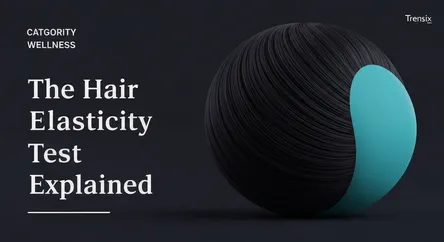Wellness
The Hair Elasticity Test Explained

Learn how the simple hair elasticity test can reveal your hair's health, indicating if it needs more moisture or protein to prevent breakage.
What is it?
The hair elasticity test is a simple method to gauge the health of your hair. It measures a hair strand's ability to stretch and return to its original shape without breaking. This "stretch test" is a key indicator of the balance between protein and moisture within the hair's cortex. Healthy, well-hydrated hair has good elasticity, meaning it can stretch and bounce back. Poor elasticity, where hair either snaps immediately or stretches without returning to its shape, often signals damage, dryness, or an imbalance in its core structure.
Why is it trending?
The hair elasticity test is gaining popularity due to a growing "skinification" of hair care, where consumers are more informed and seek personalized routines. This easy, at-home test empowers individuals to diagnose their hair's specific needs without professional tools. Its simplicity has made it a viral topic on social media platforms, as people share their results and product recommendations. Understanding elasticity helps users move beyond generic hair types to address the core issues of hair health, such as moisture retention and protein structure, leading to more effective and targeted treatments.
How does it affect people?
Knowing your hair's elasticity directly impacts your hair care routine and product choices. If a strand breaks with little to no stretch (low elasticity), it typically indicates a need for more moisture, suggesting the use of hydrating shampoos and deep conditioners. If the hair stretches excessively and feels mushy or limp (high elasticity), it may have too much moisture and lack protein, requiring strengthening treatments. By performing this quick test, people can stop guessing what their hair needs, leading to less breakage, improved styling, and overall healthier, more resilient hair.